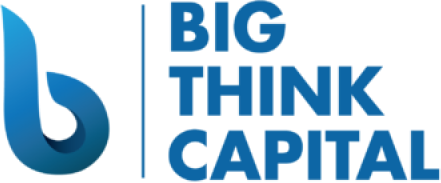Bridging the Gap: How Small Businesses Can Leverage the New Fed Interest Rates With Optimized Funding Options
Estimated reading time: 7 minutes
- Understanding the impact of rising Federal Reserve interest rates on small businesses
- Exploring various funding options for navigating a high-interest environment
- Staying informed and adapting to changes to maintain financial health
Table of Contents
- Understanding Federal Reserve Interest Rates
- The Impact of Increased Interest Rates on Small Business Loans
- Optimized Funding Options in a Higher Interest Rate Environment
- Practical Takeaways for Business Owners Exploring Financing
- Conclusion
- FAQs
Understanding Federal Reserve Interest Rates
The Federal Reserve plays a vital role in the U.S. economy, particularly in influencing interest rates. By setting the federal funds rate, the Fed can either encourage or slow down economic activity. In early 2025, the Fed raised interest rates in response to inflationary pressures—an attempt to stabilize prices and maintain purchasing power.
For small business owners, it’s essential to comprehend how these rate changes affect borrowing costs. Higher interest rates typically lead to:
- Increased costs for loans and credit
- Higher monthly payments on variable-rate loans
- Caution among lenders in extending credit
Business owners who are not prepared for these changes may find themselves facing higher expenses, which can put stress on cash flow and profitability.
The Impact of Increased Interest Rates on Small Business Loans
When the Fed raises interest rates, the cost of borrowing increases for small businesses. Here are some critical impacts to consider:
- Higher Loan Costs: As interest rates rise, lenders adjust their rates accordingly. For instance, a typical small business loan with a fixed interest rate may become significantly more expensive, impacting repayment terms.
- Tighter Lending Criteria: In an environment of higher interest rates, lenders may adopt more stringent criteria for approvals, making it harder for businesses with less-than-perfect credit to secure loans.
- Reduced Investment Opportunities: Higher borrowing costs can lead to delays in investment for expansion, equipment purchases, and other growth initiatives, potentially stalling business development.
Business owners should stay informed about federal interest rate forecasts and consider how shifts in rates might affect their existing debt and future financing needs.
Optimized Funding Options in a Higher Interest Rate Environment
While rising interest rates present challenges, they can also catalyze innovation in funding strategies. Here are several funding options that small business owners can consider to bridge financial gaps caused by these economic changes.
SBA Loans
Small Business Administration (SBA) loans are a solid choice for entrepreneurs seeking long-term funding at relatively low rates. Even in a high-interest environment, SBA loans remain attractive due to the following:
- Lower Rates: SBA loans typically offer lower interest rates compared to other financing options. This means that even if rates are higher than before, businesses can still access affordable financing.
- Long Repayment Terms: With repayment terms that extend up to 25 years, businesses can enjoy lower monthly payments, allowing for easier cash flow management.
- Flexibility with Uses: SBA loans can be used for various purposes including real estate purchases, working capital, and equipment acquisition.
Big Think Capital helps businesses navigate the application process and find the right SBA loan products tailored to their needs.
Equipment Financing
For businesses needing to upgrade or acquire new technology or machinery, equipment financing presents a compelling solution. In a high-interest environment, consider:
- Fixed Payments: Equipment financing often features fixed interest rates, protecting businesses from potential future increases in interest rates.
- Asset Ownership: While it is a form of debt, equipment financing results in ownership of the asset, which can enhance your balance sheet and improve operational capabilities.
- Tax Benefits: Businesses can often deduct interest and depreciation on financed equipment, providing additional savings.
If you are looking to modernize your operations, Big Think Capital can assist with equipment financing options suited to your company’s growth trajectory.
Merchant Cash Advances (MCA)
Merchant cash advances are a valuable resource for businesses that experience fluctuations in cash flow. MCAs differ from traditional loans in several ways:
- Flexible Payments: Payments are tied directly to sales, meaning if your business has slow months, your payments reduce proportionally.
- Quick Access to Funds: The application process is generally faster than traditional bank loans, providing immediate access to funds when needed.
- No Collateral Required: Businesses can secure funding without risking collateral, making it an appealing option for many entrepreneurs.
Given the volatility of economic conditions, MCAs can provide a lifeline for businesses navigating unexpected expenses or slow revenue periods.
Practical Takeaways for Business Owners Exploring Financing
- Assess Your Financial Health: Before seeking funding, conduct a thorough analysis of your business’s financial condition, including cash flow, credit score, and existing debt. This will provide insight into your borrowing capacity.
- Consider Multiple Funding Sources: Diversifying your funding sources can mitigate risks associated with fluctuating interest rates. Look into different options such as SBA loans, equipment financing, and MCAs to determine which fits your needs best.
- Engage with a Funding Expert: The landscape of small business financing is complex, especially in a high-interest environment. Consulting with experts at Big Think Capital can help you make informed decisions about funding options tailored to your situation.
Conclusion
Facing rising interest rates presents challenges for American small businesses, but it can also open doors for innovative financial strategies. By understanding the implications of the Federal Reserve’s decisions and exploring robust alternative lending options, business owners can effectively navigate the complexities of the current economic climate.
At Big Think Capital, we are committed to helping small businesses secure the funding they need to not only survive but thrive. If you would like to learn more about how our services can support your business in the current financial landscape, visit bigthinkcapital.com today or connect with a funding expert to discuss your options. Together, we can find the best financing solutions that empower your business to bridge the gap and seize opportunities.
FAQs
1. What should I do if I need funding in a high-interest rate environment?
Consider exploring options such as SBA loans, equipment financing, and merchant cash advances, which may provide more favorable conditions.
2. How can I improve my chances of securing a loan?
Conduct a thorough assessment of your financial health, including cash flow management and credit score improvement strategies.
3. What are the benefits of SBA loans?
SBA loans often feature lower interest rates, longer repayment terms, and flexibility in use, making them an attractive option for many business owners.
4. Are merchant cash advances safe to use?
While MCAs can provide quick funding, they often come with higher costs compared to traditional loans, so it’s essential to assess your cash flow needs.
5. How can I stay informed about changing interest rates?
Regularly monitor announcements from the Federal Reserve and financial news sources, or consult with financial advisors to understand the implications for your business.






